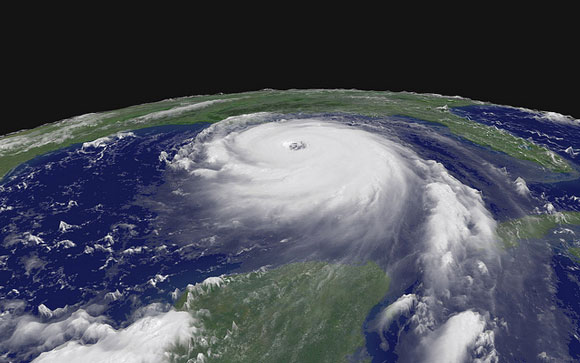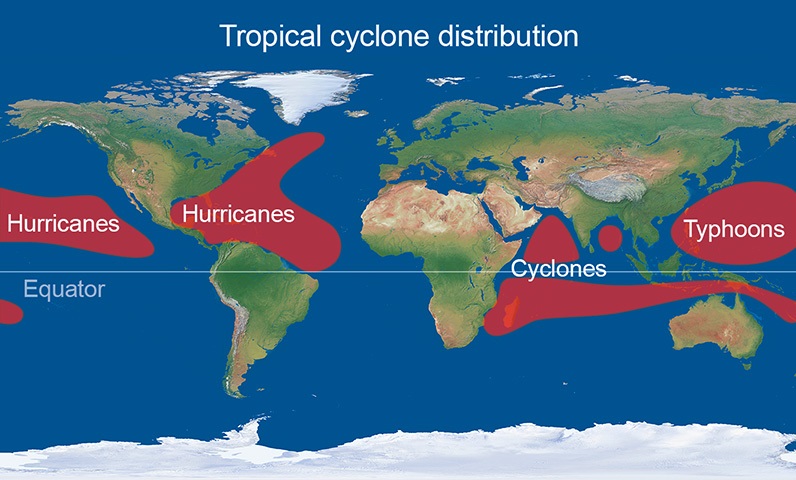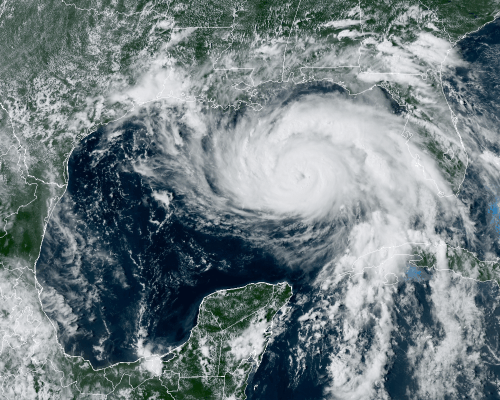As of 09/02/21, Hurricane Ida dropped 8″ of rain and caused at least 14 deaths that were reported in New York, New Jersey, and Pennsylvania following flash flooding from the remnants of Hurricane Ida hitting several major cities and causing death and destruction across the area. How are tropical storms named?
Tropical storms are named by the World Meteorological Organization (WMO) & picked from a list that rotates every year for 6 years if they display a rotating circulation pattern & wind speeds reaching 39 miles per/hr & when the tropical storm’s wind speeds go above 74 mph its develops into a hurricane.
You may remember some of the Storm names from years past that share the same name. That is because of the rotation. You will see this list of names again in 2026 unless the storm gets retired, then a new name will replace the retired name.
Who Names Hurricanes and Why
In the early days, hurricanes were referred to by where they hit or sometimes after saints. There was “Hurricane Santa Ana” which struck Puerto Rico with exceptional violence on July 26, 1825, and “San Felipe” (the first) and “San Felipe” (the second) which hit Puerto Rico on September 13 in both 1876 and 1928.
Scientists would name the storms by their longitude and latitude number so that meteorologists could follow them but this confused many people. In the early 1950s, the U.S. National Hurricane Center first developed a formal practice for storm naming for the Atlantic Ocean.
At that time, storms were named according to a phonetic alphabet (e.g., Able, Baker, Charlie) and the names used were the same for each hurricane season; in other words, the first hurricane of a season was always named “Able,” the second “Baker,” and so on.
Then from 1953 to 1979, hurricanes only had female names. That changed in 1979 when they started alternating between male and female names. Since the early day weather information is collected 24 hrs. a day 7 days a week and recorded by researchers so that they would be better able to use that data to forecast weather occurrences. The use of easily remembered names greatly reduces confusion when two or more tropical storms occur at the same time.
In some instances, one hurricane can be moving slowly westward in the Gulf of Mexico, while at exactly the same time another hurricane can be moving rapidly northward along the Atlantic coast. In the past, confusion and false rumors arise when storm advisories broadcast from radio stations were mistaken for warnings concerning an entirely different storm located hundreds of miles away.
 The bulk of those observations is carried out by National Meteorological Services as part of the WMO World Weather Watch, which networks the observing stations to national, regional, and global weather and climate prediction centers around the clock in real-time. The World Weather Watch collects meteorological, climatological, hydrological, and oceanographic data from over 15 satellites, 100 moored buoys, 600 drifting buoys, 3,000 aircraft, 7,300 ships, and some 10,000 land-based observation stations.
The bulk of those observations is carried out by National Meteorological Services as part of the WMO World Weather Watch, which networks the observing stations to national, regional, and global weather and climate prediction centers around the clock in real-time. The World Weather Watch collects meteorological, climatological, hydrological, and oceanographic data from over 15 satellites, 100 moored buoys, 600 drifting buoys, 3,000 aircraft, 7,300 ships, and some 10,000 land-based observation stations.
National Hurricane Weather Center

Meteorologists long ago learned that naming tropical storms and hurricanes helps people remember the storms, communicate about them more effectively, and consequently stay safer if and when a particular storm strikes a coast. The U.S. National Hurricane Center started this practice in the early 1950s.
Now, the World Meteorological Organization (WMO) generates and maintains a list of hurricane names. WMO is a specialized part of the United Nations that is dedicated to international cooperation and coordination on the state and behavior of the Earth’s atmosphere, its interaction with the land and oceans, the weather and climate it produces, and the resulting distribution of water resources.
Tropical storms are given names when they display a rotating circulation pattern and wind speeds reach 39 miles per hour (63 kilometers per hour). A tropical storm develops into a hurricane when wind speeds go above 74 mph (119 kph).
Experts have developed lists of hurricane names for many of the major ocean basins around the world. Today, there are six lists of hurricane names in use for the Atlantic Ocean and Eastern North Pacific storms. These lists rotate, one each year. That means the list of this year’s hurricane names for each basin will come up again six years from now.
Why Do Roads Get Slippery After a Summer Rain?
During Hot Dry weather, residue from auto fluids, oils & rubber from tires builds up on the road. They include Asphalt Bitumen which is used in the construction & paving of roads. During the first 10-15 min of light rain, the residue makes the roads dangerous but eventually washes off the side ………………………………………………………………. Read more
Hurricane Season 2021 Names
Atlantic Hurricane names (season runs from June 1 to November 30) are Ana, Bill, Claudette, Danny, Elsa, Fred, Grace, Henri, Ida, Julian, Kate, Larry, Mindy, Nicholas, Odette, Peter, Rose, Sam, Teresa, Victor, and Wanda.
Just in case there are more hurricanes than the list provide an extra list that can be used to contain the names of more from WMO: Adria, Braylen, Caridad, Deshawn, Emery, Foster, Gemma, Heath, Isla, Jacobus, Kenzie, Lucio, Makayla, Nolan, Orlando, Pax, Ronin, Sophie, Tayshaun, Viviana, and Will.
The Difference Between a Hurricane and a Tropical Storm
Hurricanes have a circular rotation and rotate counterclockwise in the Northern Hemisphere. The only difference between a tropical storm and a hurricane is wind speed. In fact, the technical difference between the two is just one mile per hour (mph) of maximum sustained winds or a hurricane creates winds of 74 mph or more. In other parts of the world, they are called Typhoons.
Eastern North Pacific Hurricane
Hurricane (season runs from May 15 to November 30) are: Andres, Blanca, Carlos, Dolores, Enrique, Felicia, Guillermo, Hilda, Ignacio, Jimena, Kevin, Linda, Marty, Nora, Olaf, Pamela, Rick, Sandra, Terry, Vivian, Waldo, Xina, York, and Zelda
Has it Ever Snowed in Florida?
Yes, but its rare, for snowfall to occur in Florida, the polar jet stream has to move towards the south and into the Gulf of Mexico through Texas, move with a cold front across Southern Florida, and then curve towards the Northeast before combining with cooling air in the frontal clouds. .…………………………………………………………………………………. Read more

What are the Differences & Similarities Between Nor’easters vs Hurricanes?
Both formed in the Atlantic
Both storms spin around the central low-pressure zone.
Both have an Eye
Cause destruction
Differences:
Hurricanes are born in the tropics season- from 6/1-11/30-fueled by high H2O temps.
Winds 74 mph +
Nor’easters are fueled by low H2O temps-season is from Sept-April
Winds-20-50 mph .…………………………………………………………………………………………………………………………. Read more
JimGalloway Author/Editor

References: The Farmers Almanac- HURRICANE NAMES FOR THE 2021 HURRICANE SEASON
